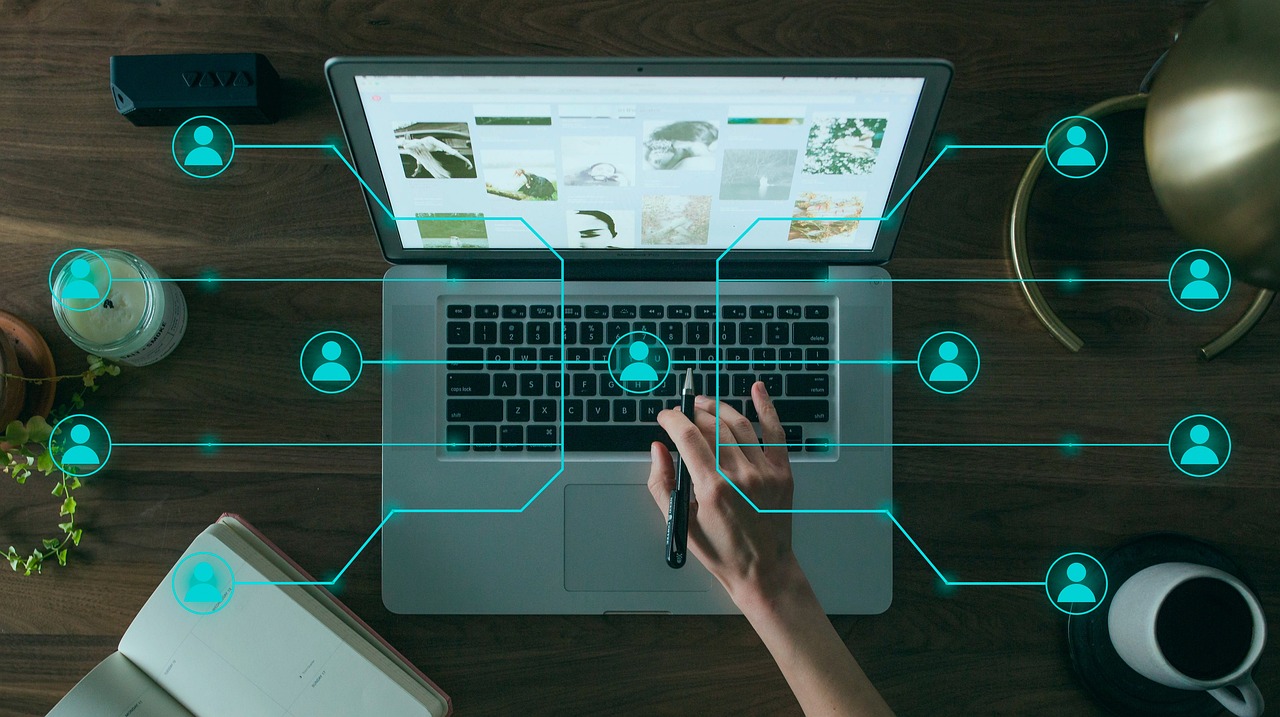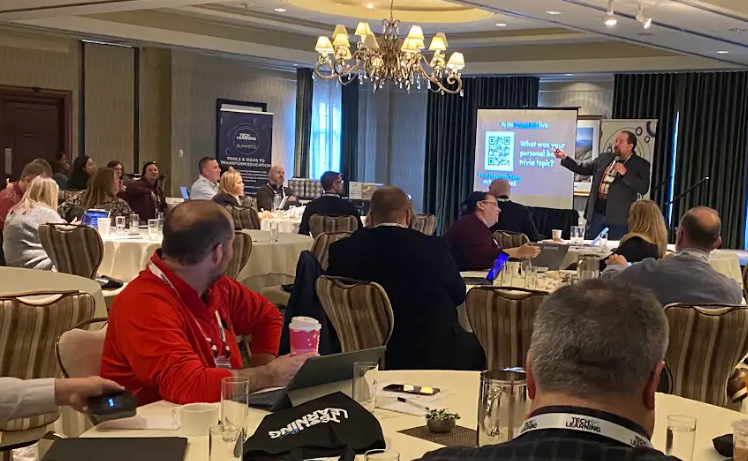8 Core Digital Literacy Skills for 2030
Preparing for 2030 requires more than updating software, it requires updating mindsets while still embracing the core cultural literacies in the arts, sciences, and the humanities.

As we approach 2030, digital literacy is evolving beyond the basic ability to operate devices and navigate the internet. In a world increasingly shaped by artificial intelligence (AI), big data, automation, and global interconnectedness, digital literacy must equip individuals to think critically, act ethically, and adapt rapidly to technological change.
This shift demands a redefinition of what it means to be “digitally literate,” expanding the concept to include skills in AI interaction, data interpretation, creativity, ethical reasoning, collaboration, and lifelong learning.
In that vein, this article was developed in collaboration with ChatGPT 5 by asking the LLM to modify my PowerPoint presentation on digital literacy in 2030 for the Southwest West Central Service Cooperative August 2025 Ed Tech Connect Conference (including the speaker’s notes) into a 1,200-word article. I then completed a thorough edit and added back some of the examples that were not included in my speaker’s notes. (Thanks again to SWWC for inviting me to speak!) I found this process illuminating to see how the LLM prioritized my presentation bullets, notes, and then added a few additional ideas “of its own.”
The digital citizens of 2030 will need to be more than consumers of technology, they will need to be creators, evaluators, and ethical stewards of a digitally rich world.
The Changing Nature of Literacy
Historically, literacy referred to reading and writing skills. Over centuries, literacy expanded to encompass media literacy, technological literacy, and now a spectrum of competencies that together define digital literacy. Each technological shift, from the printing press to the rise of the internet, has required new ways of accessing, processing, and producing information.
The late 20th century’s computer revolution brought basic digital literacy skills such as word processing, email, and online research. In the early 21st century, the proliferation of social media and mobile devices introduced multimodal literacy: the ability to interpret and create across text, images, audio, and video. By the 2020s, AI and big data began driving another transformation, adding layers of algorithmic literacy, ethical awareness, and adaptability to the digital skill set.
However, instead of continuing as a separate area of literacy or a subject area such as computer science and technology education, have often been the view that the current ubiquitous nature of digital materials, tools, and data require that digital skills be integrated into the traditional areas of literacy and not taught as a new subject area.
Tools and ideas to transform education. Sign up below.
These core literacy skills need to be learned in context. For instance, prompt engineering skills are not generic, and those who will be successful in the future will need to understand how prompting might differ in chemistry from the prompts used in a creative writing course.
8 Core Digital Literacy Skills for 2030
The Digital Literacy Skills for 2030 framework reflects this transformation. The following competencies will be essential:
1. Prompt Engineering and AI Interaction
AI tools will be embedded in nearly every profession and aspect of daily life by 2030. To use these tools effectively, individuals must learn prompt engineering: the art of crafting precise, context-rich instructions to guide AI outputs.
Key strategies include:
- Being clear and specific to minimize misinterpretation.
- Providing relevant context that shapes the AI’s response.
- Using role assignment (“Act as a legal researcher…”) to focus outputs.
- Breaking down complex tasks into manageable parts.
- Iterating and refining prompts for improved results.
Prompt engineering isn’t simply about “talking to machines;” it’s about knowing how to collaborate with AI to produce reliable, ethical, and high-quality outputs.
2. Critical Thinking and Evaluation
In a world flooded with information, the ability to evaluate credibility, bias, and purpose of digital content is non-negotiable. Critical thinking skills for 2030 must extend to recognizing deepfakes, algorithmic manipulation, and AI-generated misinformation.
Core competencies include:
- Cross-verifying information across platforms and sources.
- Identifying the motives and biases behind content.
- Applying logic and evidence-based reasoning in digital contexts.
- Teaching others how to validate information in an AI-enhanced environment.
Without critical evaluation skills, individuals risk becoming passive recipients of algorithmically tailored information streams that reinforce bias rather than expand knowledge.
3. Creativity and Innovation
Digital literacy for 2030 demands the ability to generate original ideas, remix existing content, and leverage technology for creative problem-solving. AI tools can be harnessed to act as co-creators, helping produce multimedia content, prototypes, and innovative solutions.
Creative digital literacy includes:
- Using design thinking processes in online environments.
- Embracing rapid prototyping and iterative improvement.
- Viewing failure as a step in the creative process.
- Adapting digital tools to new contexts and purposes.
Creativity is no longer a “soft skill,” it is a critical capability in fields from education and healthcare to engineering and the arts.
4. Ethical Reasoning and Judgment
Digital ethics is becoming increasingly complex, involving issues of privacy, data ownership, AI bias, and intellectual property. Ethical digital citizens must understand the implications of AI-generated content, surveillance technologies, and digital platform governance.
Competencies include:
- Navigating digital privacy and consent in an era of constant data collection.
- Modeling empathy and civility in online discourse.
- Upholding intellectual property rights and acknowledging AI’s role in content creation.
- Advocating for transparent, fair, and accountable digital systems.
The ethical dimension of digital literacy ensures that technological progress aligns with human values and rights.
5. Complete Problem Solving
Problem-solving in 2030 will often involve multiple stakeholders, complex systems, and dynamic digital environments. Fully literate individuals in 2030 must be able to define problems, use technology to analyze them, and work collaboratively toward solutions.
Key practices include:
- Leveraging digital simulations and AI analytics.
- Collaborating across platforms and geography.
- Integrating quantitative and qualitative data into decision-making.
- Communicating solutions using multimedia formats.
This competency requires blending technical skills with collaboration, adaptability, and strategic thinking.
6. Adaptability and Lifelong Learning
The pace of technological change means that the tools and platforms of 2030 may be unrecognizable from those of today. Adaptability, the willingness and ability to learn, unlearn, and relearn, will be essential.
Core behaviors include:
- Engaging in self-directed learning through online courses and microlearning.
- Staying current with evolving AI tools and digital platforms.
- Building resilience and curiosity in the face of change.
- Developing a mindset that views continuous learning as integral to personal and professional growth.
7. Interpersonal, Cultural, and Collaboration Skills
The digital workplace will be increasingly global and multicultural. Collaboration will happen in virtual spaces where cultural competence and interpersonal sensitivity are as important as technical skills.
Key skills include:
- Using collaborative tools such as shared documents, project boards, and AI co-pilots effectively.
- Knowing when and how to effectively crowdsource work.
- Understanding and interpreting digital body language.
- Building inclusive online environments that respect diverse perspectives.
- Navigating cultural differences with empathy and adaptability.
8. Data Literacy Skills
Although often treated as a separate field, data literacy is integral to digital literacy. This includes interpreting data visualizations, understanding statistical concepts, and making evidence-based decisions. In 2030, data literacy will be inseparable from digital problem-solving and AI collaboration. As often explained to students, one core data literacy point is to always be apprehensive when shown a single number or data point.
For instance, someone might point out in a Board meeting that the health center logged 66,294 swipes on the card reader at the entrance in the past year. However, without putting that data point in context, the data is just that: a data point, and not information to be acted upon. A basic question to ask would be Was that number up or down from the previous year?
As big data and generative AI tools continue to generate large amounts of data, it is essential to understand how to gather data and ensure that it can be used to guide institutional actions.
Building Digital Literacy for 2030
In Education
Schools and universities must embed digital literacy across the curriculum, rather than isolating it in specific courses. This includes:
- Teaching prompt engineering in writing and research classes.
- Integrating media literacy into social studies and science.
- Using project-based learning to build collaboration, creativity, and problem-solving skills.
- Encouraging ethical discussions around AI and technology use.
In the Workplace
Organizations can foster digital literacy by:
- Offering ongoing professional development focused on emerging tools.
- Encouraging cross-generational learning to share skills and perspectives.
- Creating policies that align technological adoption with ethical principles.
The Role of Equity in Digital Literacy
Equitable access to technology remains a foundational challenge. Without universal access to reliable devices, high-speed internet, and quality digital education, the benefits of digital literacy will remain unevenly distributed. Efforts to expand access must include rural areas, underfunded schools, and marginalized communities. Equity also means ensuring that AI systems are designed to avoid reinforcing existing social biases.
The Convergence of Digital and AI Literacy
By 2030, digital literacy will be inseparable from AI literacy. Navigating a digitally connected world will require understanding how algorithms shape content, how AI systems are trained, and how to interact with them effectively. Digital literacy will no longer be just about using tools—it will be about co-creating with them while maintaining human oversight and ethical integrity.
Conclusion
Digital literacy for 2030 represents a profound evolution from the skills of past decades. It is defined by adaptability, ethical reasoning, creativity, and the ability to collaborate across cultural and technological boundaries. As AI continues to transform the digital landscape, these competencies will become both desirable and necessary for active participation in society and the economy. This does not discount the need for traditional subject matter expertise but should be seen as a parallel pathway integrated within traditional fields of study. If a digitally literate historian cannot distinguish between the English Civil War and the American Civil War, they will be too easily overcome by deep fakes or generative hallucinations.
Preparing for 2030 requires more than updating software, it requires updating mindsets while still embracing the core cultural literacies in the arts, sciences, and the humanities. By fostering prompt engineering skills, critical thinking, ethical awareness, and cultural competence, we can ensure that individuals thrive in the AI-enhanced digital age.
Steve Baule served as a technology director, high school principal, and superintendent for 20+ years in K-12 education. He is currently the director of Winona State University’s online educational doctorate program in Minnesota.
